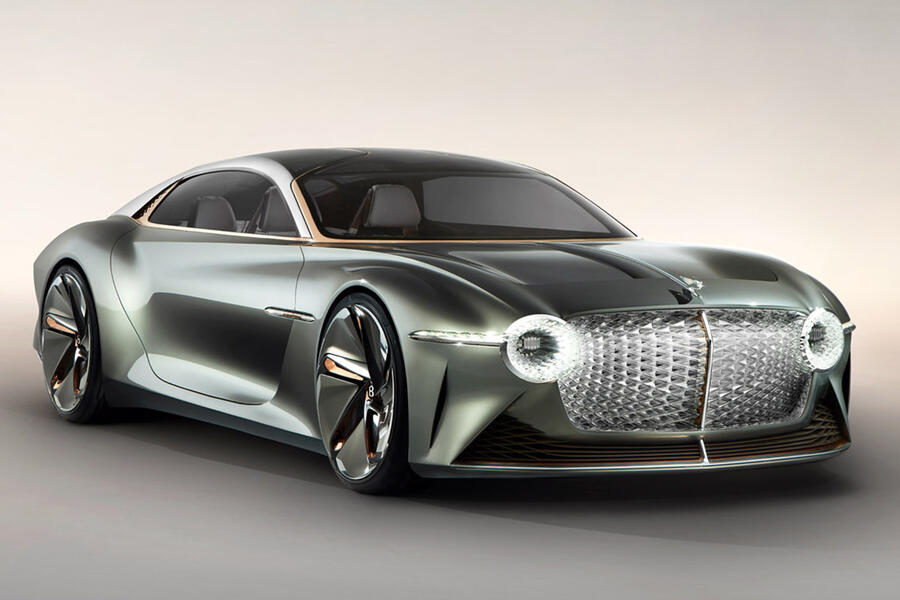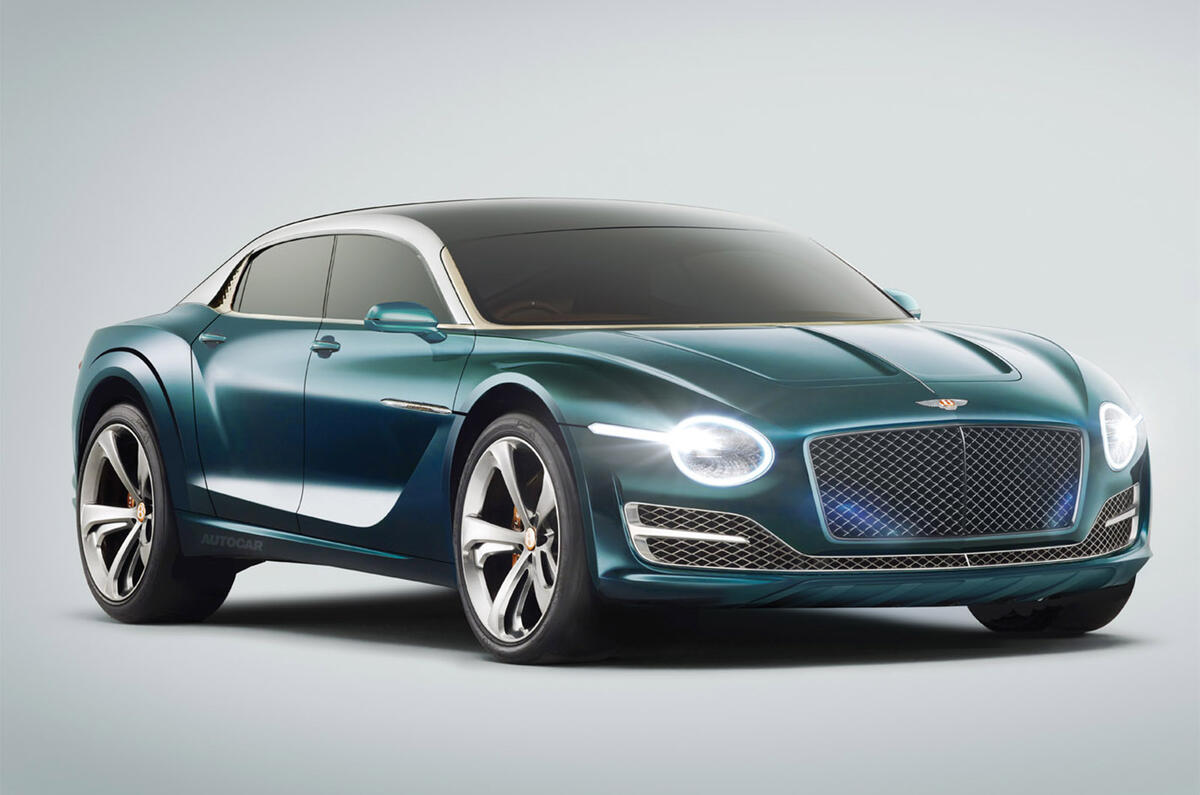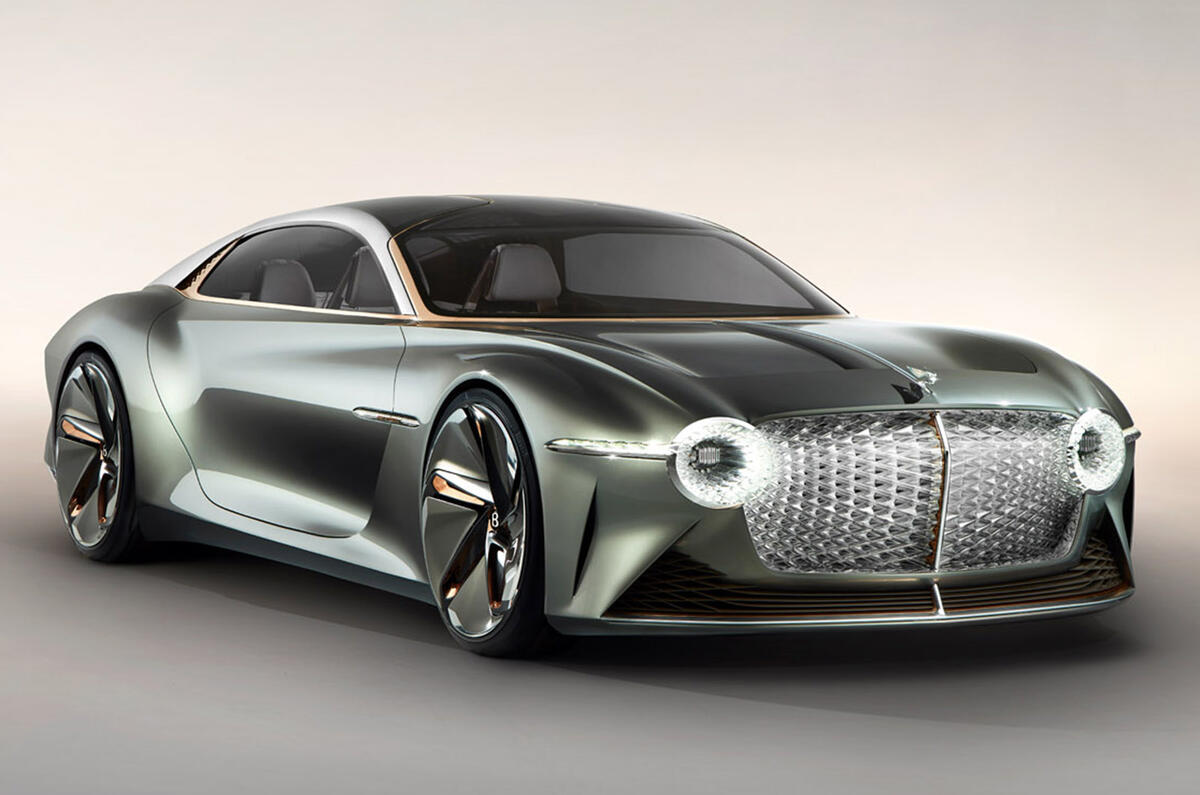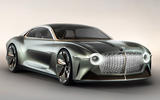Bentley has begun conceptual work on a new high-riding saloon that it’s preparing to launch as its first fully electric car. The radical model will further the firm’s ambition to establish itself as the most environmentally and sustainably led premium luxury car maker in the world.
In their bid to establish global leadership in these areas, Bentley bosses want to follow this year’s launch of the brand’s first hybrid models by revealing its first electric car by 2025. That date is already challenging designers and engineers as they wrestle with delivering a vehicle with sufficient range for customers looking for a grand touring experience along with the performance capability of today’s cars.
Heavy investment in battery technology is already helping to reduce the cost and improve the capability of batteries. However, it’s believed that the next notable step forward will come when solid-state batteries reach production, something that is not expected to happen until closer to the end of the decade. As such, Bentley is likely to launch its first electric car using a more mature version of today’s lithium ion battery technology.
However, Bentley CEO Adrian Hallmark has hinted to Autocar that his teams have already hit on one potential solution by designing a car with similarities to, but more extreme than, the Jaguar I-Pace. This machine combines a traditional saloon shape with a higher-riding bodystyle to accommodate the battery pack without pushing up into a full-SUV format, which is aerodynamically inefficient and therefore reduces range.
The upcoming Jaguar XJ and a related J-Pace model, plus a Land Rover – dubbed the Road Rover but not expected to carry that name into production – are set to follow a similar path, although Bentley’s interpretation is being envisioned to set new performance benchmarks for the industry.
“If we’re to launch an electric car in the mid-2020s, then it either needs to be smaller than today’s cars or the same size but not as upright, and smaller isn’t an appealing solution, as it implies a lower price segment,” said Hallmark. “The prediction is battery technology will have moved forward again by that date and that will put us at the edge of what we think we need to give customers: 300-350 miles of range, or enough to cruise at a 65mph average for five hours.
“We need to be looking at how we can deliver slippier cars with a profile that gets the most out of it aerodynamically in order to deliver on that promise.”
The target date of 2025 and Hallmark’s comments confirm growing evidence that the first Bentley EV will crown a position of environmental and sustainability leadership that the company has been building towards in recent years.
Bentley’s Crewe factory was certified as carbon-neutral late last year, underlining an increasingly holistic approach to sustainability that has extended as far as making honey from on-site beehives.

The EXP 100 GT concept – revealed last year and created to celebrate the firm’s centenary by looking ahead to its next 100 years – also hinted at the powertrain, materials and production methods that Bentley is working towards.
The EXP 100 GT has an electric powertrain that uses four 201-335bhp electric motors and an advanced torque-vectoring system to distribute a combined output of between 800bhp and 1340bhp to all four wheels, depending on spec. Combined peak torque is just over 1100lb ft, delivering an estimated 0-62mph of 2.5sec, along with a top speed of 186mph. Although the figures should be regarded as long-term targets, they hint at the sorts of performance levels that Bentley engineers believe will be possible in time.
Likewise, the EXP 100 GT’s interior featured innovative material use, including natural woods, glass, fabrics and leather. Some materials introduced on the concept have already transferred to production in the Bacalar, such as rice pigment paint, sheep’s wool and riverwood.
Bentley is well advanced in developing alternatives to the interior styles that have dominated its cars for decades – albeit combined with technical advances such as biometric seating to monitor and potentially boost the well-being of occupants.
“Bentley has very little to fear from an electric future,” said Hallmark. “In fact, many of the facets of electrification are what define Bentley.
“Sure, today in a GT, you can hit 207mph, but that doesn’t mean very many of our customers drive around at that speed very often, if at all. We’re not a brand that is in any way defined by offering hypercar or supercar performance.
“What they do enjoy every time they go out is super-refinement, effortless pace and total comfort. Electrification will only enhance all of those, so for customers, the trade-off is about 12 cylinders for 2000 or so electrical cells. Everything else is improved.”

Hallmark said he hoped Bentley would be in a position to pioneer any major battery or electrical architecture breakthroughs made by the Volkswagen Group, of which Bentley is a member, because of its relatively small scale and its customers, who have traditionally been willing to pay a premium to be at the cutting edge of technology.
“At Bentley, we are looking to build 11,000 to 12,000 cars a year in a worldwide market of about 85 million,” said Hallmark. “Our values are about delivering the very best money can buy, and that puts us in a position where we can lead in whatever direction we turn to.
“Yes, one goal is to lead in electrification in the luxury segment, but we also feel that sustainability can be about far more than just electrification. Our customers are happy to pay a premium if they can buy a car that is truly carbon-neutral, and that is now a core mission of the company.”
Hallmark also highlighted the Volkswagen Group’s investment of $100 million (£78.5m) in California-based battery specialist QuantumScape as a likely route to the brand becoming a leader in the development of solid-state batteries, which he described as “game changing” in terms of the energy density they could deliver for the same manufacturing costs.
“Once solid-state batteries can be productionised, then the growth in capability will become exponential,” he said. “Of course, they will initially be at the top end of the price scale, but which car maker within the [Volkswagen] Group is best placed with customers to carry that cost? I very much hope that Bentley can be at the vanguard of that and it seems logical that we should be.”
Hallmark also confirmed that emissions regulations and customer tastes mean that Bentley’s iconic W12 will be phased out, although he didn’t specify a time frame. Asked if the 12-cylinder engine had a limited lifespan, he said: “Yes, absolutely. For 100 years, we’ve tried to make engines bigger and more powerful. For the next 10 years, we’re going to try to make them disappear.
“We want to do this in a progressive and customer-orientated way. We don’t hate engines, but we do love the idea of electrification. We’ll offer hybrid options alongside combustion engine options on every model by 2023.”
Jim Holder and Mike Duff
READ MORE
Bentley Continental GT Mulliner Convertible revealed
Mulliner expansion continues with horse-themed Bentley Continental GT
Bentley reveals one-off Continental GT W12 ice racer









Join the debate
Add your comment
This has been very enlightening,...
...for it made no since to me, with Bentley doing so well financially, that they wouldn't invest in replacing their currect flagship vehicle. By making the Continental GT/Flying Spur the brands "New" flagship and the Bentayga their entry level vehicle, they can reallocate those funds for this BEV.
I wonder how much a Bentley,
I wonder how much a Bentley, not known for being lightweight, with a battery big enough to cart all that about for 300 miles will weigh in?
The chauffeur will need an HGV licence!
But such developments have to happen. In some ways an EV will be liberating for Bentley with easy access to plenty of bhp, refinement, no emission consequences and a packaging layout that is ideal for placing as much of an oppulent castle on top as you desire. Oh and a customer base that can afford that price tag with a whopping battery. Although the players car park will have to have some hefty chargers installed hooked up to the stadium.
The Apprentice wrote:
The chauffeur will be fine. If your driver passed the test before 1st January 1997, he/she will usually be allowed to drive vehicles up to 8250Kg maximum authorised weight (MAM). If passed after that date he/she can still drive vehicles up to 3500Kg MAM, although that might be pushing it...
Very confident
Well, Bentley seem very optimistic about there forth coming cars and the tech going inside it, going to be interesting to see the rivals ideas of cars in the future.